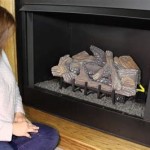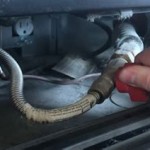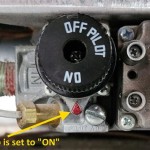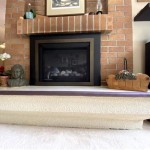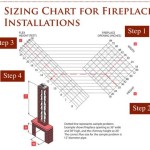Gas Fireplace Log Replacement: A Comprehensive Guide
Gas fireplaces offer a convenient and aesthetically pleasing alternative to traditional wood-burning fireplaces. A key component contributing to their realistic appearance is the set of ceramic or refractory logs placed within the firebox. Over time, these logs can deteriorate due to prolonged exposure to high temperatures and combustion byproducts. This deterioration can manifest as cracks, chipping, or discoloration, diminishing the visual appeal of the fireplace and potentially affecting its performance. Consequently, replacing the gas fireplace logs becomes a necessary maintenance task. This article provides a detailed overview of gas fireplace log replacement, covering the reasons for replacement, the selection process, and the installation procedure.
Reasons for Gas Fireplace Log Replacement
Several factors necessitate the replacement of gas fireplace logs. The primary reason is physical degradation. Repeated heating and cooling cycles cause the log material to expand and contract, eventually leading to cracking and crumbling. These cracks can alter the flame pattern, potentially creating hot spots or uneven heat distribution. In severe cases, significant pieces of the log can break off, further detracting from the fireplace's appearance and potentially interfering with the burner assembly.
Another reason for replacement is discoloration. Soot and other combustion byproducts can accumulate on the surface of the logs, making them appear dull and dirty. While some cleaning is possible, severe discoloration may be irreversible, making replacement the more practical option. Additionally, if the homeowner desires a change in the aesthetic appearance of the fireplace, replacing the logs with a different style or material can achieve the desired effect.
Finally, improper log placement or the use of incorrect log types can negatively impact the fireplace's efficiency and safety. If logs are positioned incorrectly, they can obstruct the burner ports, leading to incomplete combustion and increased carbon monoxide production. Using logs that are not specifically designed for gas fireplaces can also pose a safety hazard due to potential material incompatibility or inadequate heat resistance.
Selecting Replacement Gas Fireplace Logs
Choosing the correct replacement logs is crucial for both the appearance and the safe operation of the gas fireplace. Several factors should be considered during the selection process. First, the log material is important. Ceramic logs are generally more durable and heat-resistant than refractory logs, but they may also be more expensive. Refractory logs are often less expensive but may be more prone to cracking over time. The choice depends on the homeowner's budget and desired lifespan of the logs.
Second, the size and configuration of the logs must be compatible with the fireplace firebox and burner system. The log set should be appropriately sized to fit within the firebox without crowding the burner or obstructing the vents. Consult the fireplace manufacturer's specifications for recommended log dimensions and placement guidelines. Incorrect log placement can disrupt the airflow and combustion process, leading to inefficient burning and potentially dangerous carbon monoxide buildup.
Third, the aesthetic style of the logs should complement the overall décor of the room. Gas fireplace logs are available in a wide variety of styles, ranging from traditional oak and birch to more contemporary designs. Consider the color, texture, and arrangement of the logs to ensure they enhance the fireplace's visual appeal. Some log sets also feature enhanced details such as realistic bark textures and charred areas to further mimic the appearance of natural wood.
Finally, verifying compatibility with the fireplace's gas type (natural gas or propane) is critical. Using logs designed for the wrong gas type can result in inefficient combustion and potentially dangerous carbon monoxide emissions. Look for log sets specifically labeled for use with the existing gas type. Furthermore, ensure that the log set is certified by a recognized safety organization such as the American Gas Association (AGA) to guarantee it meets established safety standards.
Gas Fireplace Log Replacement Procedure
Replacing gas fireplace logs is a straightforward process, but it requires careful attention to detail to ensure safe and proper operation. Before commencing the replacement, the gas supply to the fireplace must be completely shut off. Locate the gas shut-off valve, typically located near the fireplace or in the basement, and turn it to the "off" position. Allow the fireplace to cool completely before proceeding.
Next, carefully remove the existing logs from the firebox. Note their original placement, as this will serve as a reference for positioning the new logs. It is advisable to take photographs of the log arrangement before removal. Clean the firebox thoroughly, removing any accumulated soot, ash, or debris. This will help ensure proper airflow and prevent any interference with the burner system.
Consult the manufacturer's instructions for the new log set to determine the correct placement of each log. Typically, the instructions will include a diagram or schematic illustrating the proper arrangement. Position the logs according to these instructions, ensuring that they do not obstruct the burner ports or vents. Proper log placement is essential for optimal flame pattern and efficient combustion.
Once the new logs are in place, carefully inspect the burner assembly to ensure that it is free of any obstructions. Verify that all connections are secure and that there are no gas leaks. Turn the gas supply back on and test the fireplace to ensure it is functioning properly. Observe the flame pattern and listen for any unusual noises. If any issues are detected, immediately shut off the gas supply and consult a qualified gas fireplace technician.
It is strongly recommended that a qualified gas fireplace technician perform the log replacement, especially if the homeowner is not familiar with gas fireplace systems. A technician can ensure that the replacement is done safely and correctly, minimizing the risk of gas leaks, carbon monoxide emissions, or other potential hazards. They can also inspect the entire fireplace system for any other maintenance needs, ensuring its continued safe and efficient operation.

How Long Do Gas Logs Last To Replace Fireplace

How Long Do Gas Logs Last To Replace Fireplace

How Long Do Gas Logs Last To Replace Fireplace

How To Select And Install A Gas Fireplace Log Set Fireplaces Direct Learning Center

The Best Gas Log Sets For 2024 Fireplaces Direct Learning Center

Warming Trend Update Gas Logs To Improve Performance And Appearance Walton

Hargrove Classic Oak Vented Gas Fireplace Logs 15 Inch

Small Gas Logs Reduced Depth Vented And Ventless

American Gas Log Dundee Oak 30 In Vented Natural Fireplace Set With Complete Kit Manual Match Lit Do30hdmtch The Home Depot

We Install Gas Logs Middle Tn Sweeps Ladders

